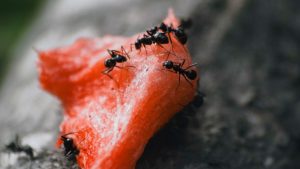Short answer
The average lifespan of a Cormorant is around 20-25 years.
Life expectancy
The average life span of a Cormorant, also known as the Phalacrocoracidae family, can vary depending on the species. Generally, these birds have a lifespan ranging from 12 to 20 years in the wild. However, some species have been known to live longer under favorable conditions.
One example is the Great Cormorant (Phalacrocorax carbo), which is widely distributed across Europe, Asia, and parts of Africa. In the wild, they typically live between 14 and 20 years. However, there have been recorded instances of Great Cormorants reaching an age of over 25 years in captivity. These birds are known for their adaptability and resilience, which contributes to their relatively long life expectancy.
On the other hand, the Brandt's Cormorant (Phalacrocorax penicillatus), found along the Pacific coast of North America, has a slightly shorter lifespan. In the wild, Brandt's Cormorants generally live for about 10 to 15 years. Factors such as predation, environmental conditions, and competition for resources can impact the longevity of these birds.
It's important to note that individual factors, including diet, habitat quality, and the presence of predators, can significantly influence the lifespan of a Cormorant. Additionally, various human activities, such as habitat destruction and pollution, can also impact the overall population and average life span of these birds.
Some interesting facts about Cormorant
- Cormorants are excellent divers and swimmers, with their streamlined bodies and webbed feet that enable them to propel through water smoothly.
- Unlike most aquatic birds, cormorants have wettable feathers that get fully saturated with water during diving. This reduces buoyancy and allows them to dive deeper in search of prey.
- Cormorants have a unique fishing behavior known as "group fishing." They often work together to corral fish into a tight group near the water’s surface, making it easier for them to catch their meal.
- These birds have a remarkable ability to regurgitate and reuse their food. After swallowing large fish, they may bring it back up to the surface and re-swallow it head-first, enabling them to consume larger prey.
- Overall, cormorants have a fascinating worldwide distribution, being found on every continent except Antarctica. This adaptability has allowed them to colonize a wide range of habitats, from coastal regions to inland lakes and rivers.
Summary
Cormorants are long-lived birds that typically live between 20 to 30 years in the wild, although some individuals have been known to live up to 35 years. Factors such as predation, habitat availability, and human disturbances can affect their lifespan. These aquatic birds are capable of adapting to various environments and have excellent diving and fishing abilities. Despite their initially negative reputation due to their perceived impact on fish populations, Cormorants play an important role in maintaining aquatic ecosystems. Overall, Cormorants are fascinating birds with relatively long lifespans and valuable ecological contributions.




